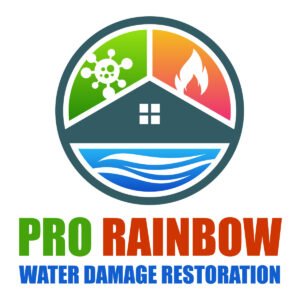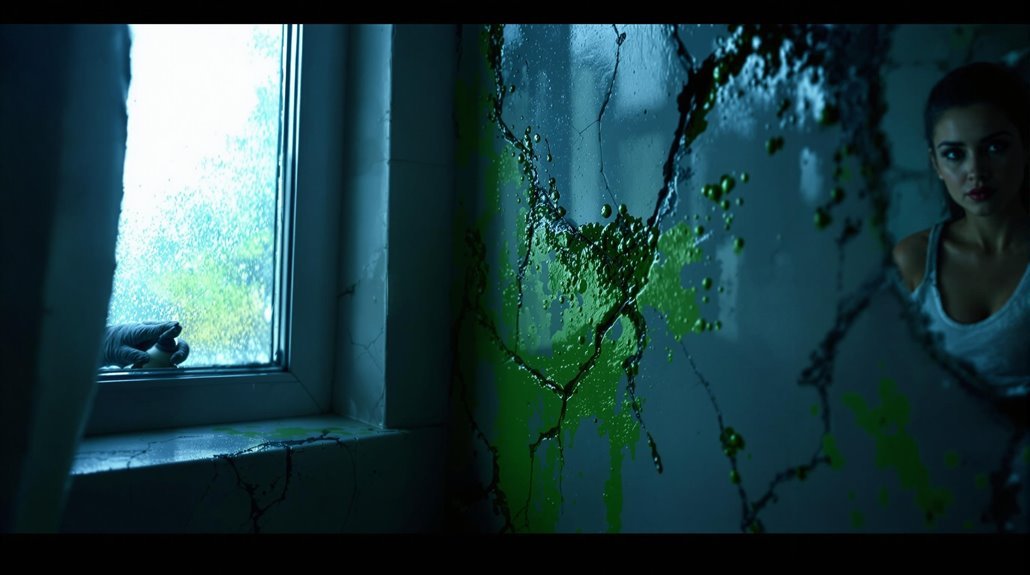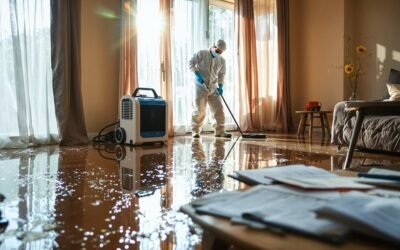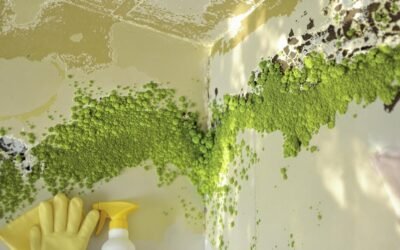When dealing with green mold, you must evaluate its severity since it can trigger allergies and respiratory issues. If you notice extensive mold growth, it's safer to leave the area until it's cleaned. High moisture levels create a prime environment for mold, so check for leaks and humidity sources. Conduct a thorough inspection for visible mold and water damage. If it's beyond your capability, contemplate professional remediation. Your health should be the priority, and understanding the specifics of your situation is essential. There's more to contemplate that could guide your next steps effectively.
Key Takeaways
- Assess the extent of mold growth; small patches may be manageable, but large infestations require immediate action.
- Consider your health; if you experience allergies or respiratory issues, leaving the affected area is advisable.
- Conduct a thorough inspection for moisture sources; addressing leaks and humidity can prevent further mold development.
- Seek professional remediation for extensive mold problems to ensure safe and effective removal.
- Prioritize preventive measures, like improving ventilation and regular inspections, to minimize future risks.
Understanding Green Mold
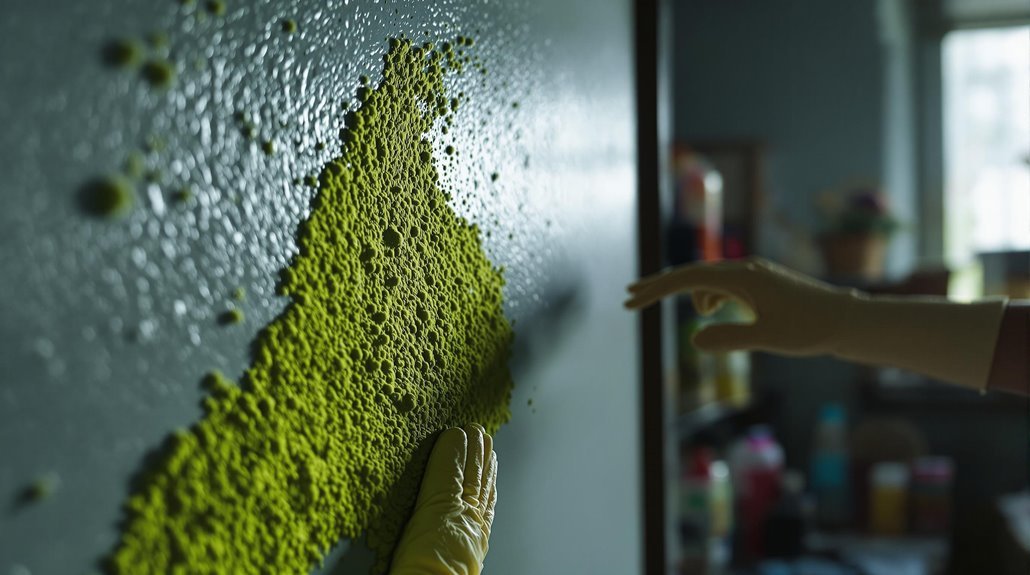
Understanding green mold is essential for effective prevention methods, as mold remediation services can help address any existing issues before they escalate. Green mold, often identified by its vibrant color, is a type of fungus that thrives in damp environments. You'll encounter various mold types, but green mold specifically prefers areas with high moisture, poor ventilation, and organic materials. Understanding its growth patterns is essential for effective prevention methods. To combat this mold, you should maintain low humidity levels, regularly inspect basements and bathrooms, and guarantee adequate airflow in your home. Utilizing dehumidifiers can likewise help considerably. Furthermore, promptly fixing leaks and guaranteeing proper drainage will limit moisture accumulation. By implementing these strategies, you can minimize the chances of green mold development, creating a safer and healthier living environment for you and your family.
Health Risks Associated
Mold exposure can pose significant health risks, especially for vulnerable populations. If you suffer from mold allergies, you might experience symptoms like sneezing, runny nose, or itchy eyes when exposed to green mold. For individuals with pre-existing respiratory issues, such as asthma or chronic obstructive pulmonary disease (COPD), the effects can be even more severe. Inhaling mold spores can trigger asthma attacks or worsen breathing difficulties, leading to increased medical interventions. Furthermore, prolonged exposure may contribute to the development of new respiratory problems. It's essential to recognize these risks and take appropriate action if you suspect mold presence in your environment. Additionally, swift water removal services can help minimize mold growth and protect your health. Staying informed and proactive can help safeguard your health and well-being in mold-affected spaces.
Identifying Mold Growth Sources
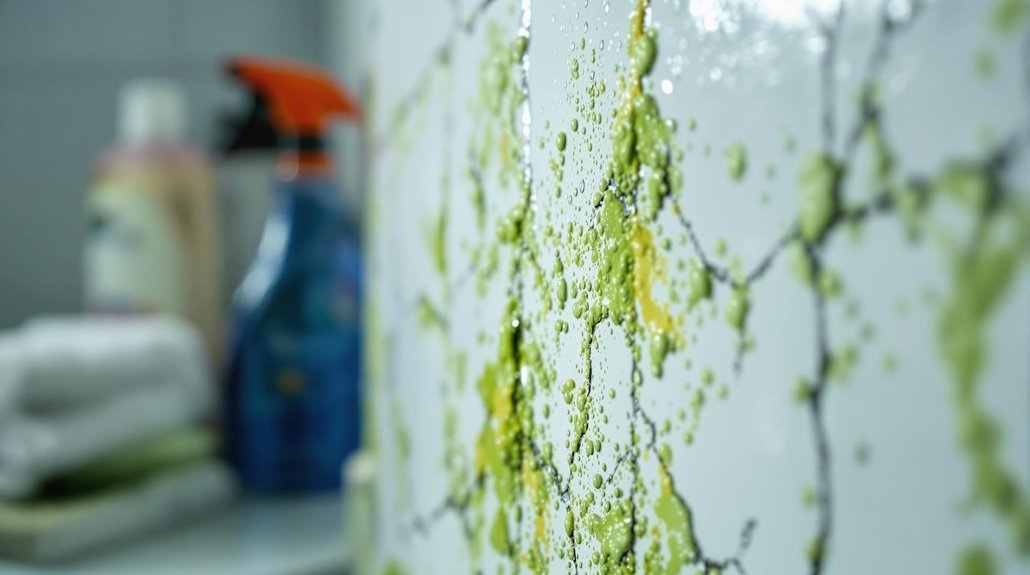
To effectively combat green mold, you need to identify its growth sources. Common moisture sources, such as leaks and high humidity, often contribute to mold proliferation. Recognizing the signs of mold growth will help you address the problem before it escalates.
Common Moisture Sources
While various factors contribute to mold growth, identifying common moisture sources is fundamental for effective prevention. Understanding where moisture accumulates helps you tackle the problem before it escalates.
Consider these key sources of moisture:
- Basement leaks: Water intrusion from foundation cracks or poor drainage can create a damp environment.
- Roof leaks: Damaged shingles or flashing can lead to water seeping into your home, especially during rainstorms.
- High humidity: Areas like bathrooms and kitchens often experience increased humidity levels, providing a perfect breeding ground for mold.
Signs of Mold Growth
How can you tell if mold is taking hold in your home? Look for discoloration on walls, ceilings, or floors, which may indicate various mold types, including green mold. Pay attention to musty odors, as they often signal hidden mold growth. Check areas prone to moisture, like bathrooms and basements, for visible spores or water stains. You'll likewise want to monitor your health; symptoms like coughing, sneezing, or skin irritation can suggest mold exposure. To combat mold, regularly inspect your home and employ prevention methods, such as controlling humidity levels and improving ventilation. By staying vigilant, you can identify mold growth early and take action to safeguard your home and health.
Assessing Mold Damage
Before you tackle mold remediation, it's crucial to assess the extent of the damage. Conducting a thorough mold damage assessment can help you determine the best course of action. Utilize effective mold inspection techniques to identify areas affected by mold.
- Check for visible mold growth on surfaces.
- Look for water damage signs, such as discoloration or warped materials.
- Assess the air quality for musty odors, which often indicate hidden mold.
Effective Remediation Strategies
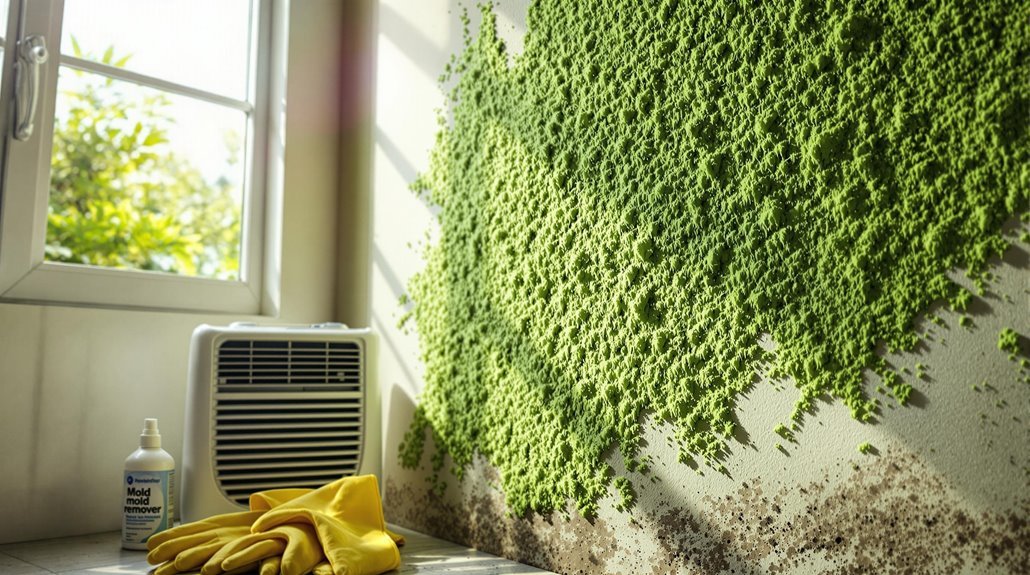
Once you've assessed the mold damage, implementing effective remediation strategies is essential to restore your space and prevent future growth. Begin by utilizing appropriate remediation techniques, such as removing contaminated materials and cleaning surfaces with mold-inhibiting solutions. Make certain your work area is well-ventilated to minimize exposure. If the mold covers a significant area, consider hiring professionals who specialize in mold remediation. After addressing the immediate issue, focus on preventive measures to minimize future occurrences. This includes repairing leaks, improving ventilation, and controlling humidity levels. Regularly inspect your home for signs of moisture and mold to catch potential issues early. By combining these remediation techniques with proactive preventive measures, you can create a healthier living environment.
Making the Decision
When you encounter green mold, evaluating the health risks it poses is essential. Understanding your mold remediation options will help you make a knowledgeable choice on how to address the issue effectively. Weighing these factors carefully guarantees you protect both your health and your property.
Health Risks Assessment
As you assess the health risks associated with green mold, it's crucial to think about both the immediate and long-term effects on your well-being. Green mold can lead to various health effects, particularly for those with pre-existing conditions or sensitivities. Consider these risk factors:
- Respiratory issues: Exposure may cause coughing, sneezing, or asthma exacerbation.
- Allergic reactions: You might experience skin irritation or sinus problems.
- Immune system impact: Prolonged exposure can weaken your immune response, increasing vulnerability to infections.
Understanding these health effects can help you make a knowledgeable choice about whether to stay or leave your environment. Evaluate your personal health and any vulnerable individuals around you to weigh the risks effectively.
Mold Remediation Options
Deciding on mold remediation options requires careful consideration of various factors, including the extent of the infestation, your budget, and the potential impact on your health. You can choose between DIY mold removal methods or hiring professional services. DIY can be cost-effective for minor issues, but it often lacks the depth needed for larger infestations. Professional services guarantee thorough mold removal and minimize health risks but come with a higher price tag.
Here's a quick comparison to help you decide:
| Option | Pros |
|---|---|
| DIY Removal | Cost-effective, accessible |
| Professional Help | Detailed, expert knowledge |
| Equipment Rental | Affordable, provides tools |
| Prevention Tips | Low-cost, proactive approach |
| Health Monitoring | Informs ongoing strategies |
Evaluate your situation carefully to make the best choice.
Conclusion
In the battle against green mold, your home's health mirrors your own. Just as a garden needs weeding to flourish, your living space requires vigilance and action. If mold's presence threatens your well-being, don't hesitate—take the necessary steps to reclaim your sanctuary. Trust your instincts; a safe environment nurtures both body and spirit. Remember, a thriving home is like a vibrant ecosystem—remove the toxins, and watch your life blossom anew.
